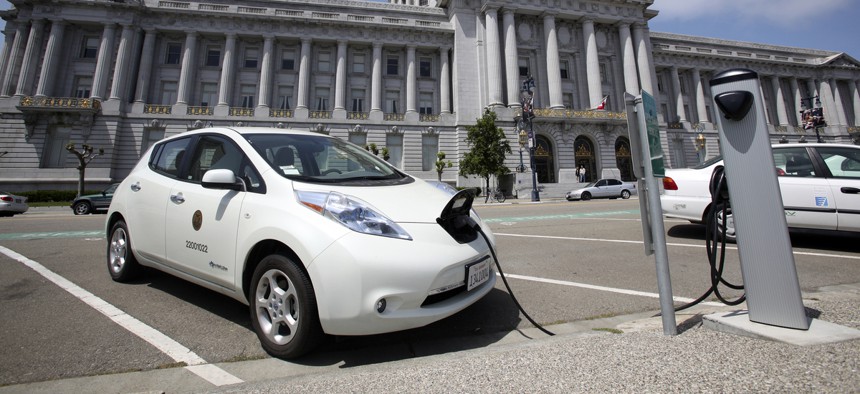Utilities Are Paying Their Customers to Buy Electric Vehicles

Shutterstock

Connecting state and local government leaders
With few alternatives, utilities are spending their money—and carmakers’ cash—to get people hooked on batteries.
Electricity utilities were never designed for a world in which electricity demand didn’t go up forever.
For a century, that was fine. But after 2005, U.S. demand leveled off and, in some regions, began to decline. The Tennessee Valley Authority is now preparing for an unprecedented 13% drop in demand across the region it serves in seven states, Vox reports, the first sustained drop in the utility’s 85-year history.
As customers generate their own power from renewable sources, efficiency measures spread, and the economy sheds industrial customers, electricity providers are barreling toward bankruptcy (pdf). Economic growth no longer guarantees higher consumption.

Utilities scrambling to reinvent themselves are turning to electric vehicles. The transport sector may be the only major new source of electricity demand for developed economies. Bloomberg estimates that electrifying the US light-duty fleet would add 774 terrawatt hours of demand to the grid, nearly the same as the entire US industrial sector today. Globally, EVs are expected to drive electricity consumption up 300-fold by 2040 (pdf), to about 5% of total consumption.
Utilities have made a halting entrance, so far, to this brave new world. Charging infrastructure is still evolving and unevenly distributed. Until recently, utility regulators hesitated to approve investments in charging infrastructure, to avoid leaving ratepayers on the hook for underused infrastructure. (This began to change in 2014, when California reversed course and began reviewing what is now more than $1 billion in new charging projects.) Utilities must also convince customers to adopt variable pricing that encourages off-peak charging, and “smart charging” technologies to manage load by responding to utilities’ calls for more or less energy automatically.
Only 21% of utilities (pdf) provide such EV equipment right now. More people must buy EVs as well—and while the sector is rising fast, EV sales account for just 1% of new cars.

Utilities have made a halting entrance, so far, to this brave new world. Charging infrastructure is still evolving and unevenly distributed. Until recently, utility regulators hesitated to approve investments in charging infrastructure, to avoid leaving ratepayers on the hook for underused infrastructure. (This began to change in 2014, when California reversed course and began reviewing what is now more than $1 billion in new charging projects.) Utilities must also convince customers to adopt variable pricing that encourages off-peak charging, and “smart charging” technologies to manage load by responding to utilities’ calls for more or less energy automatically.
Only 21% of utilities (pdf) provide such EV equipment right now. More people must buy EVs as well—and while the sector is rising fast, EV sales account for just 1% of new cars.
There’s a lot of money at stake. The cost of accommodating the surge of EVs will run into the hundreds of billions of dollars globally by 2040 (pdf). Delaying will prove expensive as well. Even plugging a few EVs into a neighborhood grid without careful management could drastically shorten the life of equipment such as transformers, costing thousands of dollars.
Yet the potential profits are even greater. In a world of falling electricity demand, utilities can now take billions of dollars in the transportation sector away from the fossil fuel industry. Politics, technology and economics are aligning to help them do that. “[Utilities] all want to eat the oil industry’s lunch,” says Max Baumhefner of the environmental group Natural Resources Defense Council. “So we’re happy to show them the way to the buffet.”
Michael J. Coren writes for Quartz, where this article was originally published.

NEXT STORY: Interior seeks social media management tool




